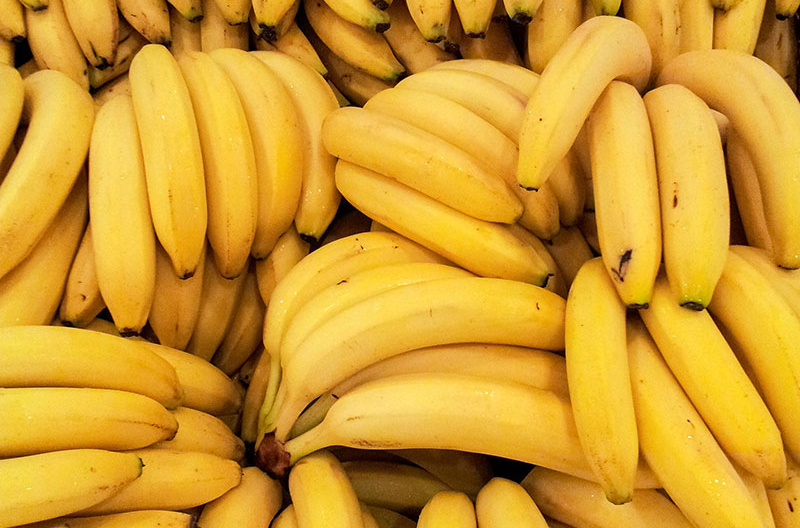Two-thirds of shoppers have increased their spending on fresh foods over the past two years, with more than 60 percent of consumers spending up to 30 percent of their average monthly grocery budget on this category, according to the Deloitte “Future of Fresh” survey released Nov. 13.
Key takeaways
- Over the last two years, two-thirds of consumers increased spending on the fresh food category.
- Over 60 percent of consumers spend up to 30 percent of their average monthly grocery budget on this category.
- Price is one of the most important considerations of fresh food purchases, with 92 percent of consumers citing cost as an important aspect in their purchasing decisions.
- In the survey, 80 percent of consumers actively seek healthier versions of the food they purchase and 77 percent avoid preservatives and chemicals in their food.
- When purchasing perishables, 58 percent of consumers actively consider sustainability aspects, such as local sourcing, recyclable packaging and water neutrality.
Why this matters
To gain deeper insight into fresh food consumers as well as fresh food manufacturers and retailers, Deloitte’s “Future of Fresh“ study surveyed 2,000 consumers and 153 fresh food industry executives. The survey provides key insights into consumer behavior and how manufacturers and retailers can grow the fresh food category.
Growth in consumer demand, shelf space outpaces fresh food sales
With two in three consumers reporting more fresh food purchases, retailers are increasing the space allotted to fresh foods in their stores to meet the rise in consumer demand. But despite these trends, total fresh food sales continue to be outpaced in growth compared to overall food sales, creating untapped potential for retailers and manufacturers.
“Despite the prominence given to fresh foods in stores, growth rates are not living up to their potential. Retailers should better understand and centralize management of the fresh food category to help address the issue from not only the consumer demand side, but also the manufacturing and retail side,” said Barb Renner, vice chairman and U.S. consumer products leader at Deloitte LLP.
How Americans shop (or don’t shop) for fresh foods
Advanced analysis on U.S. fresh food consumers’ attitudes and behavioral patterns revealed three distinct buying personas:
- Forwards (31 percent): consumers who are very committed to health and wellness, actively choose health over convenience, place a high value on sustainability and are more willing to pay a premium for fresh foods.
- Followers (47 percent): consumers who display interest in healthier options and sustainability and have a willingness and ability to purchase fresh foods but aren’t as enthusiastic as Forwards.
- Neutrals (22 percent): consumers who show the lowest commitment to health and wellness, prioritizing price and convenience over health.
How retailers and manufacturers are prioritizing fresh foods
Much like consumers, companies in the retail and manufacturing spaces are also embracing the fresh food category at varying levels. When assessing companies on the criteria of percentage of revenue from fresh foods in relation to the annual budget for technology and supporting processes, four types of organizations emerge: Leaders, Learners, Aspirers and Testers.
Leaders are achieving higher fresh food sales with smaller teams and greater investment in technology and supporting processes. Leaders are more than three times as likely to have a centralized staff for fresh foods (20 percent) than Learners (6 percent) and tend to have smaller teams, with 71 percent having less than 20 people managing their fresh foods categories. Leaders also tend to have a slower growth in fresh food staff with only a 27 percent annual increase compared to 53 percent for Learners. Leaders also show more caution when growing their budgets, with a 57 percent annual increase compared to 79 percent for Learners.
When it comes to managing fresh foods, manufacturers cite the following challenges: quality control of raw materials on the factory floor (25 percent), processing (20 percent) and procurement of raw materials (13 percent). For retailers, key challenges are spoilage (32 percent), product pricing (16 percent) and shelf life (15 percent). Storage also is a key concern for both manufacturers (20 percent) and retailers (24 percent).
Implementation of more advanced technologies is low
Technology can be a key enabler, but most organizations are in their nascent stages of implementing more advanced technologies. For example, only 38 percent have partially or fully implemented artificial intelligence-based warehouse management to monitor fresh food stocks, with 3 percent using in-store technologies that allow for consumers to access product information using a smartphone. Further, only 9 percent are using big data and analytics to identify actionable insights and trends and only 4 percent are using blockchain to track the movement of fresh foods throughout the supply chain.
Across all organizations, the most common barriers to technology implementation include the extent of time required to implement technology (78 percent) and a lack of skilled workers (28 percent).
“Retailers and manufacturers have ample opportunity to stimulate consumer demand by targeting ‘Followers’ as well as ‘Forwards’ and highlighting value proposition of fresh food through communication on sourcing, safety, and healthy eating. As companies create additional demand, they should look to implement technologies and analytics that help to deliver on the Fresh promise and improve their costs,” said Stephen Rogers, executive director, Deloitte Insights Consumer Industry Center at Deloitte LLP.

